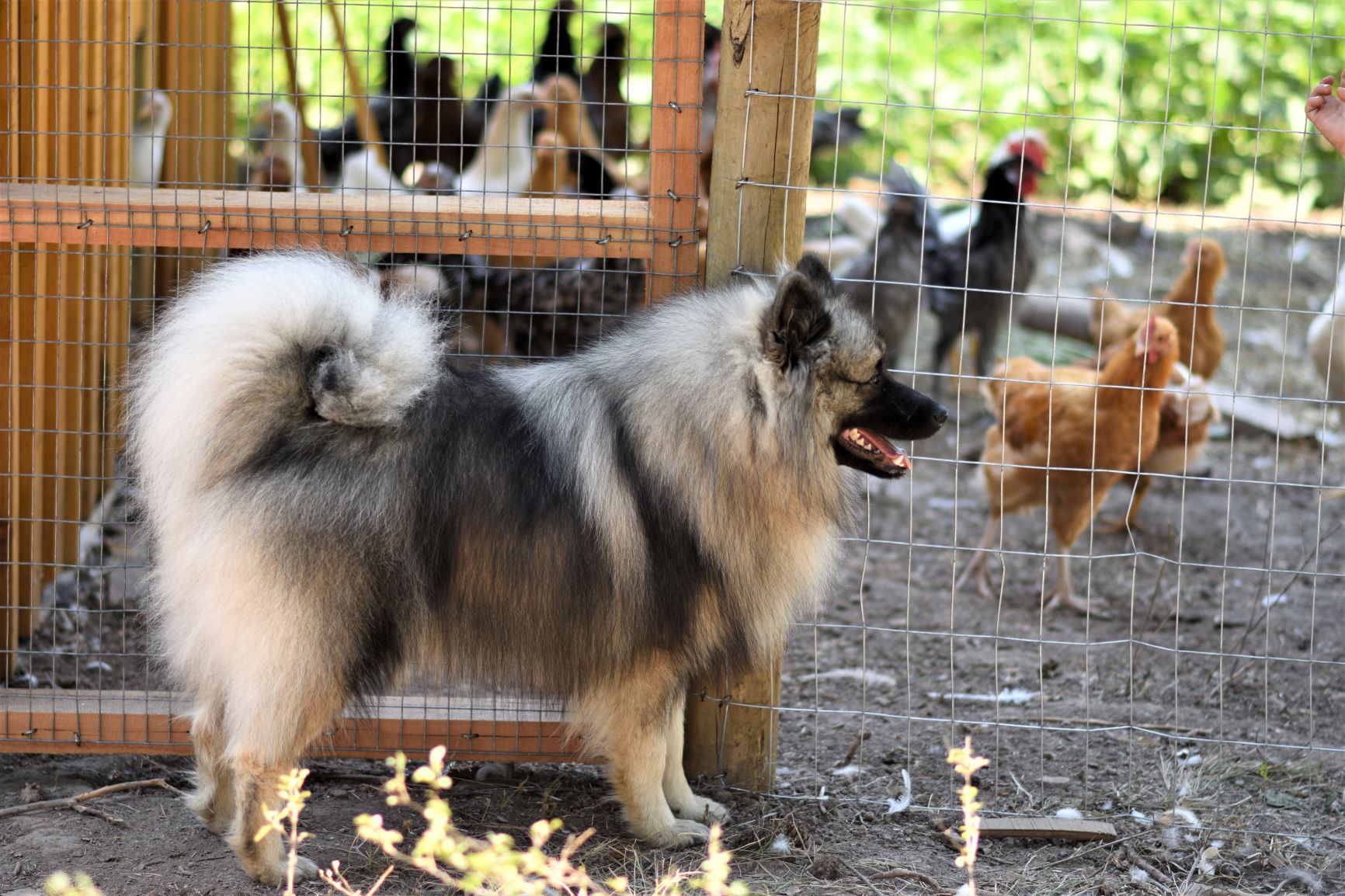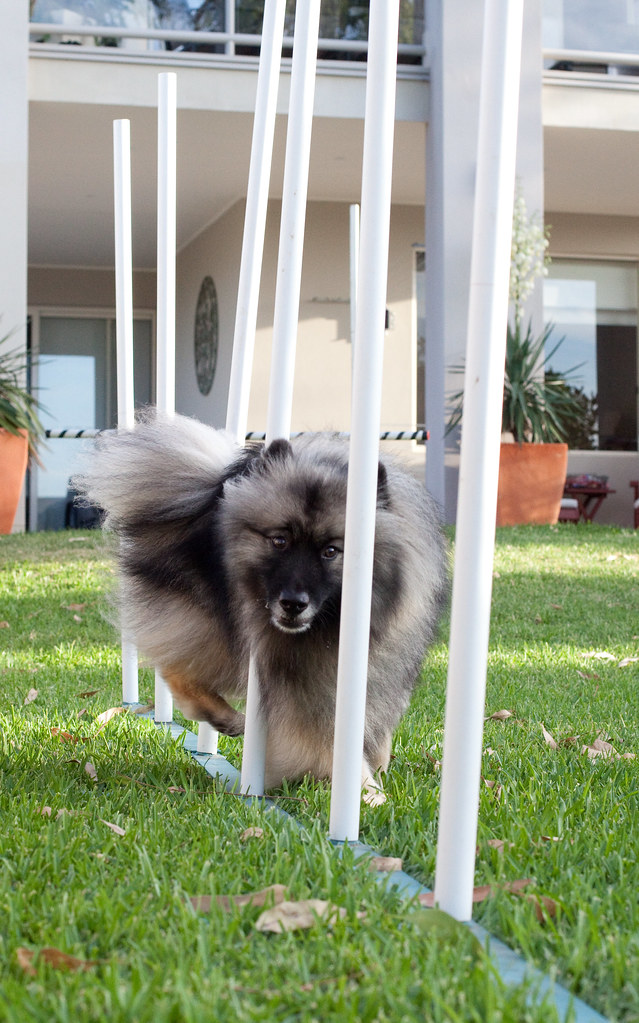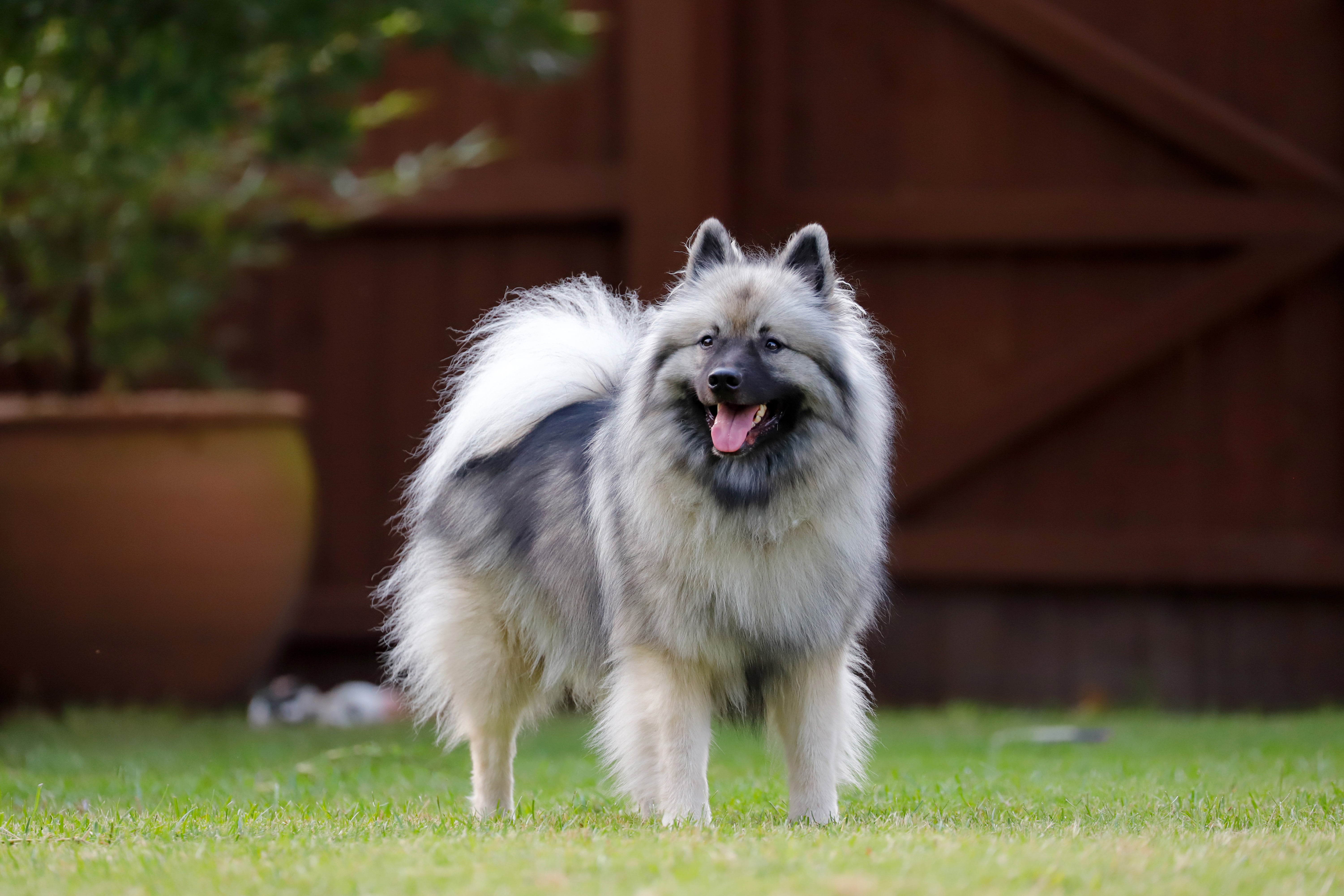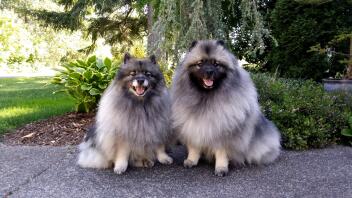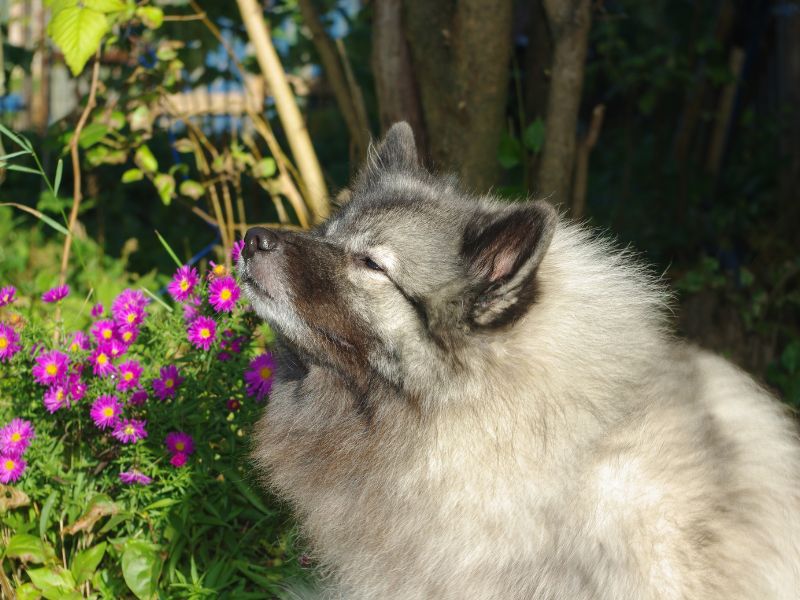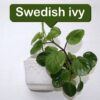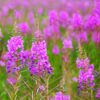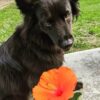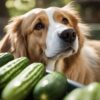Key Takeaways
- Ensure your garden has a sturdy fence at least 4-6 feet tall to prevent Keeshonds from escaping.
- Choose durable surfaces like artificial turf or mulch to withstand your dog’s play and prevent digging.
- Incorporate shade and water features to keep your Keeshond cool, as they are prone to overheating.
- Use dog-safe, non-toxic plants to create a sensory garden that engages your Keeshond’s curiosity.
- Provide enrichment activities such as obstacle courses and scent games to stimulate your dog’s mind and body.
Creating the Perfect Dog-Friendly Garden for Keeshonds
Designing a garden that caters to the needs of your Keeshond can be rewarding and enjoyable. This fluffy, friendly breed is known for its intelligence, agility, and sociable nature. Therefore, creating a space that is both safe and stimulating is essential. Let’s explore how to make your garden the perfect haven for your Keeshond.
The Ideal Fence for Security and Visibility
A strong and reliable fence is the backbone of a dog-friendly garden. Keeshonds are known for their cleverness and agility, so it’s crucial to have a fence that can prevent any potential escapes. A height of 4-6 feet is generally recommended. Additionally, ensure that the fence is secured at the bottom to deter any digging attempts. Besides that, using materials like wood or vinyl can provide both durability and aesthetic appeal.
Visibility is another important factor. While your Keeshond enjoys the safety of the garden, they also love to observe the world around them. Consider a fence design that allows for visibility, such as spaced pickets or mesh panels, so your dog can watch the outside world while remaining secure.
“About Keeshonds” from www.mtmountainelkhounds.com and used with no modifications.
Optimal Garden Dimensions and Surfaces
The shape and size of your garden should allow your Keeshond plenty of room to run and play. Open spaces are ideal for games like fetch or chase, which help burn off energy and keep your dog physically fit. A rectangular or oval shape can maximize running space and minimize obstacles.
When it comes to surfaces, durability is key. Keeshonds are active dogs, and your garden should be able to withstand their playful antics. Consider using artificial turf, which is easy to maintain and resistant to wear and tear. Alternatively, mulch or pea gravel can provide a natural look while being gentle on your dog’s paws. For more information on pet-friendly plants, you can explore the ASPCA non-toxic pansy orchid which is safe for dogs.
Tackling Barking and Prey Drive
Keeshonds are known for their vocal nature, which can sometimes lead to excessive barking. To manage this, create a garden environment that minimizes triggers. Fences with limited visibility can reduce the sight of passing animals or people, thus lessening barking prompts.
To address their prey drive, provide plenty of toys and activities that keep them engaged. Scent games or puzzle toys can be excellent for mental stimulation, redirecting their focus from potential prey to more constructive play.
Cooling and Enrichment Solutions for Keeshonds
Keeshonds have a thick double coat, which means they can easily overheat in warm weather. Therefore, it’s crucial to incorporate cooling solutions in your garden to ensure their comfort and safety. Consider using plants like wild strawberries as ground cover to provide a cooler surface for your Keeshonds.
“Keeshond agility sales” from www.vivanapolinesodden.no and used with no modifications.
Creating An Interactive Play Area for You and Your Kee To Enjoy Together
Building an interactive play area in your garden is a wonderful way to engage with your Keeshond while providing them with the mental and physical stimulation they need. Think of this space as a mini adventure park tailored to your dog’s interests and abilities.
Start by incorporating a few basic agility obstacles. These could be simple items like tunnels, weave poles, or small jumps. Not only do these features provide a fun challenge, but they also help in improving your Keeshond’s coordination and confidence.
Additionally, include a variety of textures and surfaces. You might lay down a section of sand or gravel for digging or a patch of cool, soft grass for lounging. Different surfaces not only enrich their play experience but also help keep their paws healthy by naturally filing their nails.
Dog-Proof Landscaping Strategies
Designing a garden that can withstand the enthusiasm of a Keeshond involves careful planning and thoughtful material choices. These strategies ensure your garden remains beautiful and functional despite your dog’s active lifestyle.
Choosing Materials that Resist Dog Urine
Dog urine can be tough on plants and grass, leading to unsightly yellow patches. To combat this, opt for materials that are resistant to urine damage. Artificial turf is an excellent choice because it’s easy to clean and doesn’t discolor like natural grass. If you prefer a more natural look, consider using clover, which is more resistant to urine and provides a lush, green appearance.
For pathways and heavily trafficked areas, stone or brick can be both attractive and practical. These materials are durable and easy to hose down, making maintenance a breeze. Additionally, consider using wild strawberries as an edible ground cover to complement these hard surfaces.
“Keeshond Dog Breed & Adoption …” from www.petfinder.com and used with no modifications.
Sturdy Ground Cover Options for Play Areas
In areas where your Keeshond plays the most, you’ll want ground cover that can handle a lot of wear and tear. Mulch is a great option as it provides a soft surface for running and is less likely to cause injury. It also helps to retain moisture and suppress weeds, keeping your garden looking neat. If you’re considering other plants for your garden, you might want to explore options like the periwinkle vinca, which can be a pet-friendly choice.
Another option is pea gravel, which is gentle on paws and allows for excellent drainage. It’s a particularly good choice for areas prone to muddiness, as it helps to prevent pooling water and mud.
Plants for a Keeshond Sensory Garden
Creating a sensory garden can offer your Keeshond a rich tapestry of scents, textures, and sights to explore. This not only keeps them entertained but also enriches their natural curiosity and intelligence. Consider including non-toxic plants to ensure a safe environment for your pet.
Choosing Safe Pet-Friendly Plants
When selecting plants, safety should be your top priority. Opt for non-toxic varieties that won’t harm your dog if they decide to take a nibble. Marigolds, sunflowers, and snapdragons are all excellent choices that add vibrant color to your garden without posing a risk to your Keeshond.
Besides flowers, consider adding herbs like mint or basil. These not only offer delightful scents but can also be used in your cooking. Your Keeshond will enjoy the aromatic experience, and you’ll appreciate the fresh ingredients. For more ideas, check out this guide on how to plant a dog-friendly garden.
“Keeshond: Over 1,802 Royalty-Free …” from www.shutterstock.com and used with no modifications.
Selecting Plants That Can Withstand Your Kee’s Inquisitive Nature
Keeshonds are naturally curious, so choose hardy plants that can endure some exploration. Lavender and rosemary are not only aromatic but also robust enough to withstand some roughhousing. These plants can serve as a natural barrier or border, adding both beauty and function to your garden.
Consider incorporating grasses like fountain grass or blue fescue. These provide interesting textures and are resilient enough to recover from playful antics. They also sway in the breeze, offering visual stimulation that can captivate your Keeshond.
By carefully selecting and arranging these elements, you can create a garden that is both a safe haven and an exciting playground for your beloved Keeshond. For instance, consider using wild strawberries as an edible ground cover to enhance the play area.
Conclusion: Making Your Keeshond’s Garden a Haven
Creating a dog-friendly garden for your Keeshond is a rewarding venture that requires thoughtful planning and execution. By focusing on safety, durability, and enrichment, you can transform your outdoor space into a paradise for your furry friend. Remember to install a sturdy fence to keep your Keeshond secure, choose surfaces that can withstand their playful nature, and provide plenty of shade and water to keep them cool.
Incorporating a sensory garden with pet-safe plants not only enriches your Keeshond’s environment but also adds beauty and tranquility to your home. With these elements in place, your garden will become a haven where your Keeshond can explore, play, and relax in safety and comfort.
Frequently Asked Questions (FAQ)
What fence height and angle is recommended for Keeshonds?
A fence height of 4-6 feet is generally recommended for Keeshonds. This height is sufficient to prevent them from jumping over, while the angle of the fence should be straight and sturdy to deter climbing or leaning. Reinforce the base to prevent digging.
How can I effectively manage my Keeshond’s barking in the garden?
To manage barking, reduce external stimuli by using privacy fencing or plant barriers. Training is essential; use commands to teach your dog when to bark and when to be quiet. Interactive toys and regular exercise can also help expend energy and reduce barking.
What are some heat management tips for Keeshonds in hot weather?
Provide ample shade with trees or canopies and ensure there is always fresh water available. Consider installing a kiddie pool for cooling off. Avoid outdoor activities during the hottest parts of the day and opt for early morning or late evening play sessions.
“Keeshond Dogs | Dog Breeds” from www.omlet.us and used with no modifications.
Which ground cover best withstands dog play and deters digging?
Durable ground covers like artificial turf or grass are preferred. These materials can withstand heavy play and are easy to maintain. Mulch and pea gravel also deter digging by providing a less appealing surface but may not be ideal.
Choosing the right ground cover not only enhances the look of your garden but also ensures it remains a safe and enjoyable space for your Keeshond. For pet-friendly options, consider plants like perennial pincushion flowers which are safe and easy to care for.
“Keeshond: Breed Guide to the Delightful …” from www.holistapet.com and used with no modifications.
What are the best pet-safe plants for a curious Keeshond?
Select non-toxic plants like marigolds, sunflowers, and snapdragons. These plants add vibrant colors and are safe if your Keeshond decides to explore them with their mouth. Additionally, herbs like mint and basil can enrich the sensory experience and are safe for dogs.
By incorporating these plants, you create a garden that’s both beautiful and safe, allowing your Keeshond to explore without risk. Always monitor your dog’s interactions with plants and consult with a vet if you’re unsure about plant safety.
